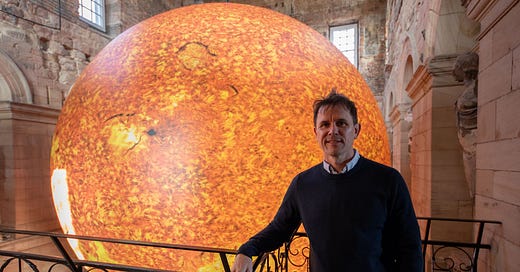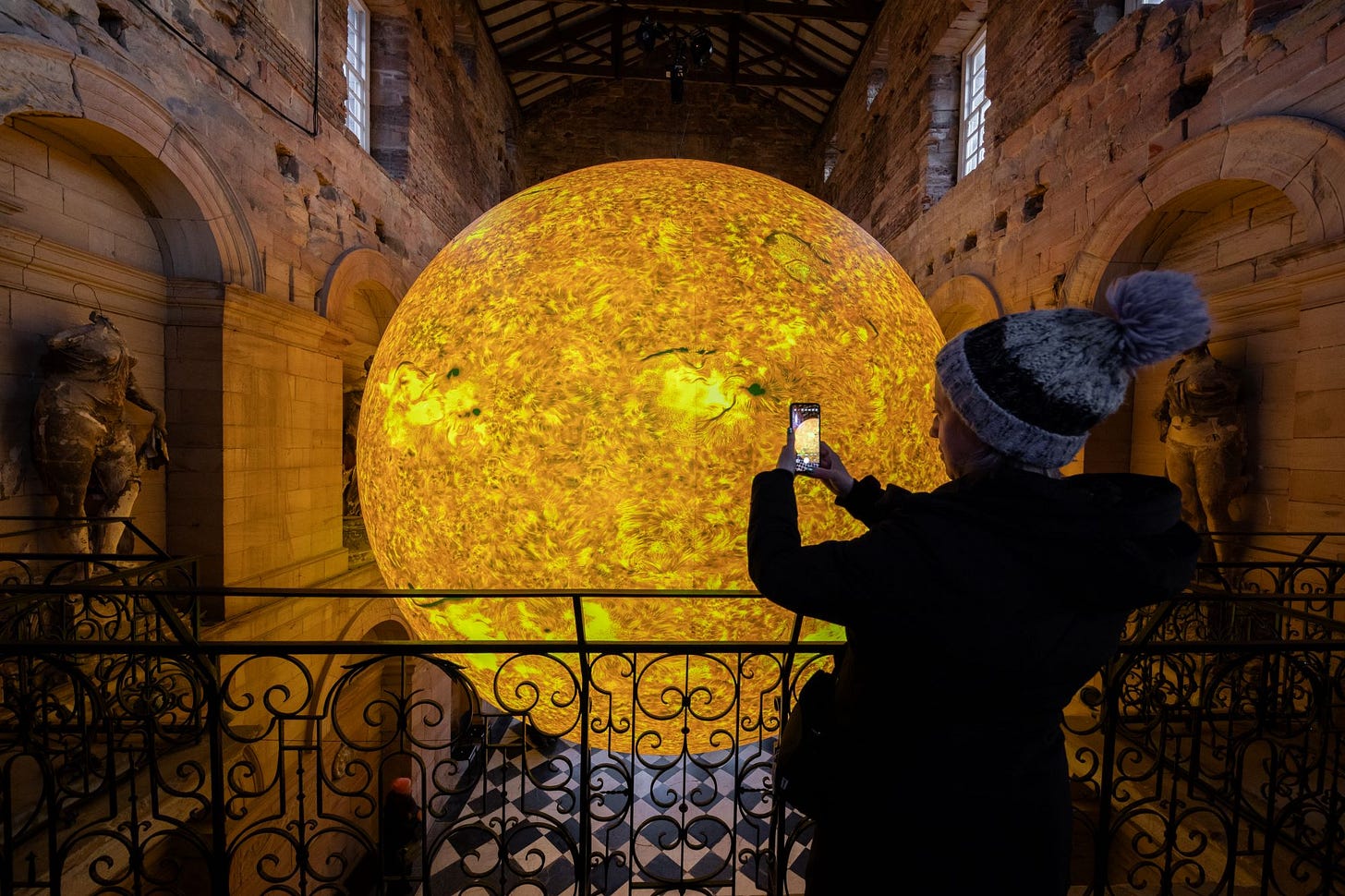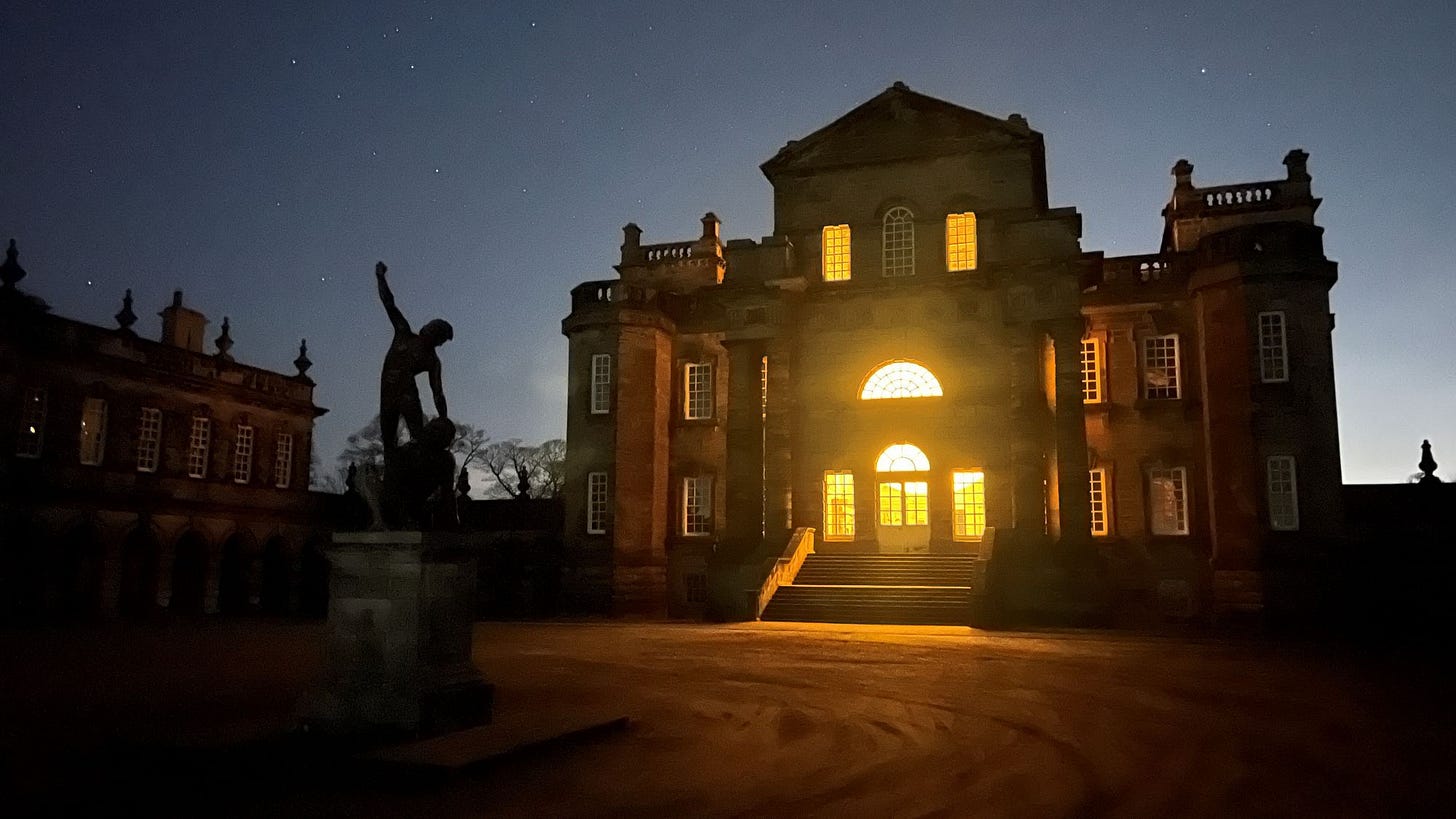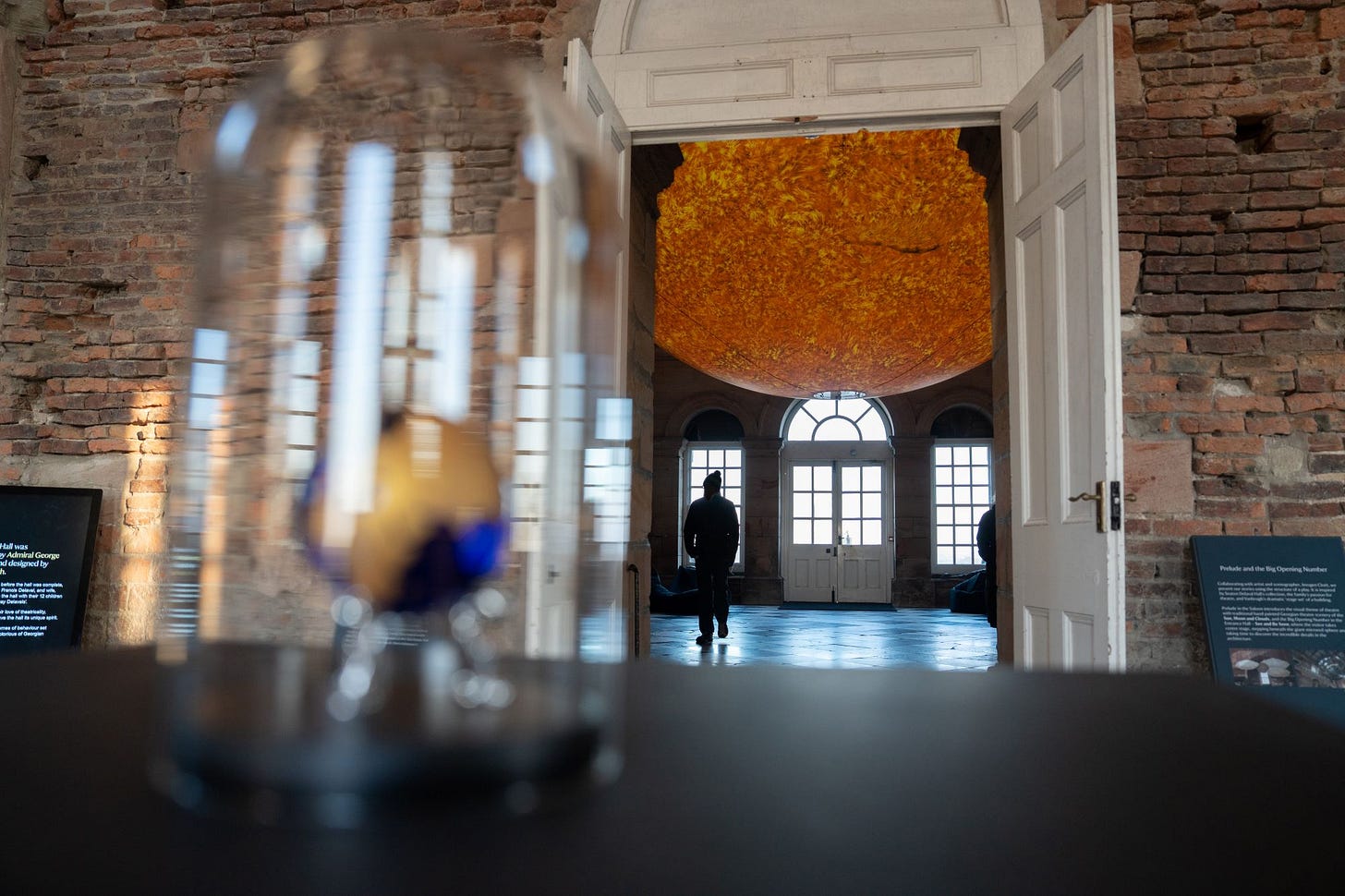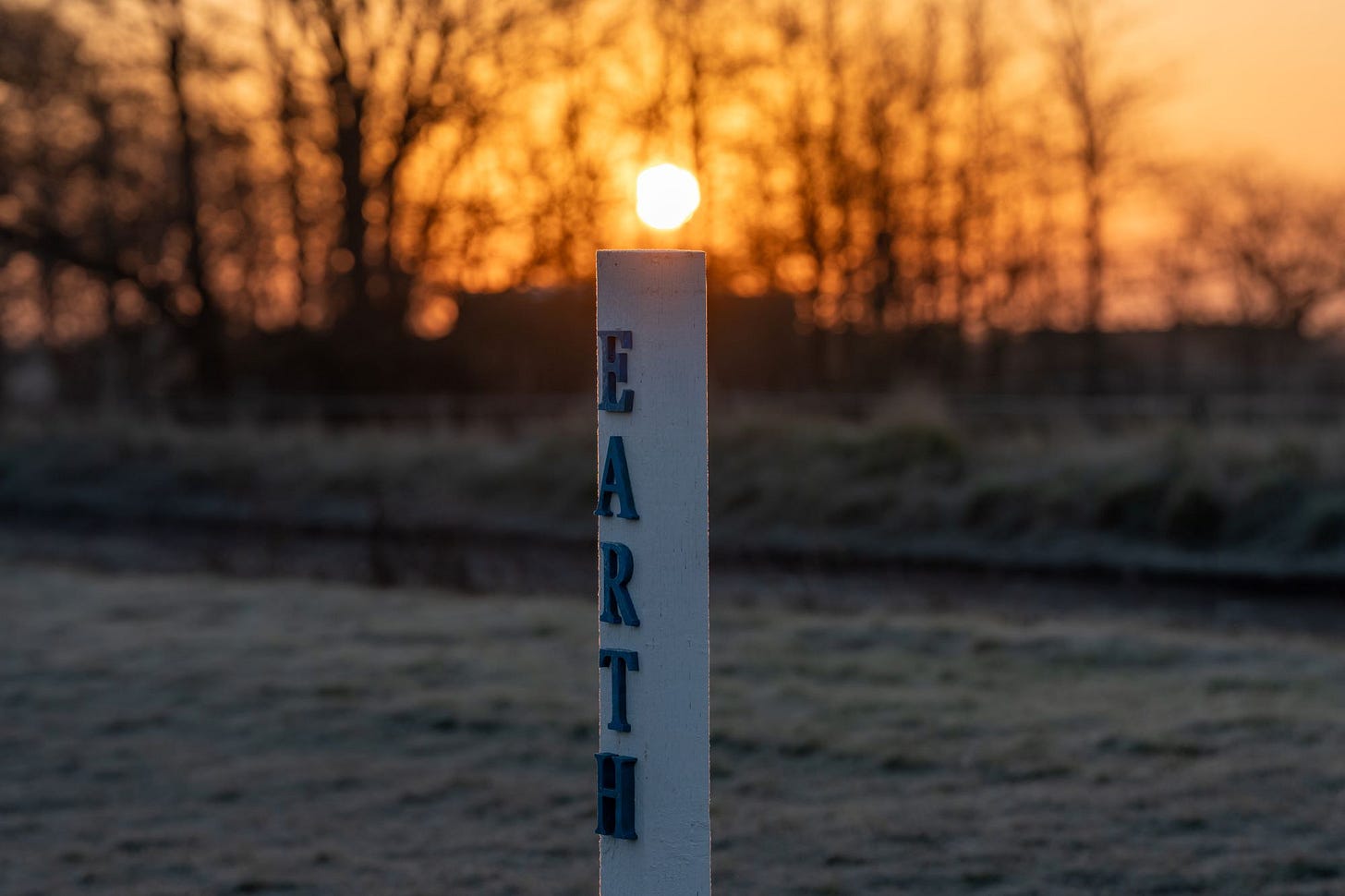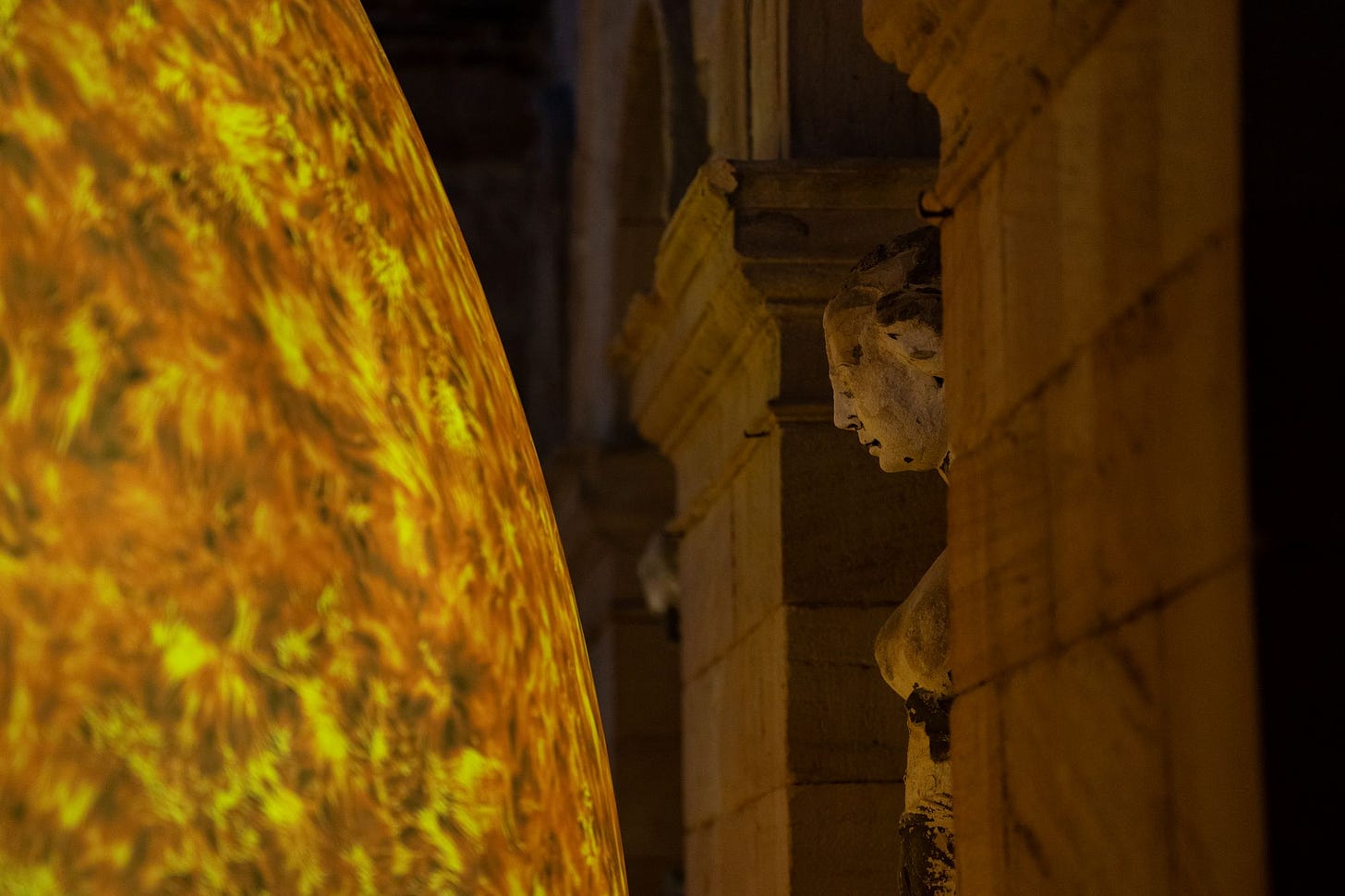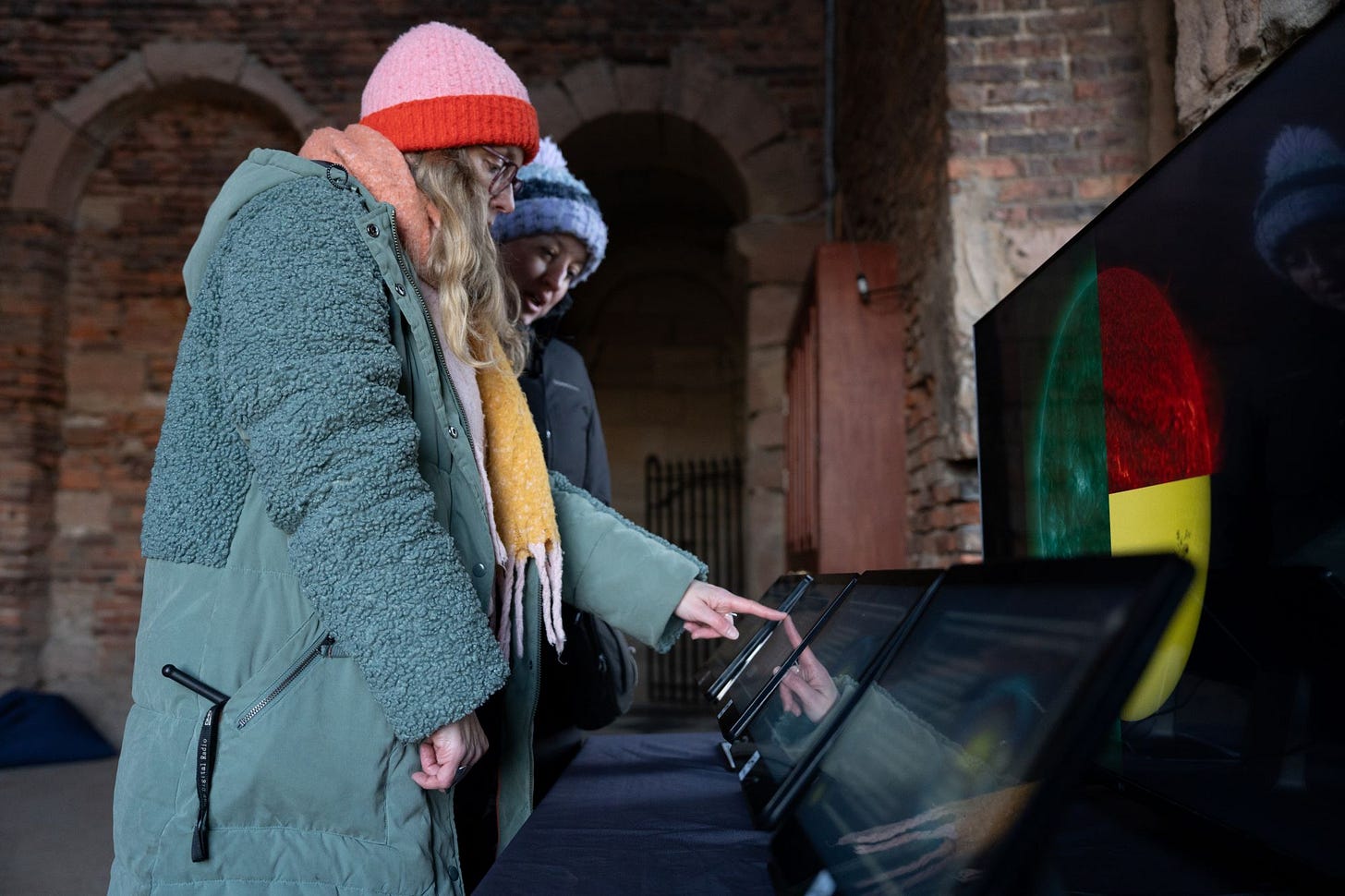Bats and bullet holes: artist Luke Jerram on Helios
A sculpture named after the Greek sun god is at Seaton Delaval Hall
It perhaps wasn’t the best time to be viewing Luke Jerram’s Sun sculpture, Helios, because the real thing was rising fast in the sky and shining brightly, bleaching contrast out of the landscape around Seaton Delaval Hall.
Already away home for breakfast were the 120 early risers who had snapped up the tickets for a dawn encounter on the opening day.
Nearly three hours later it was daylight but wintry, even with the Spring Equinox less than 24 hours away. Here I was, feet from the Sun – or at least a representation of it – and feeling the chill.
Luke Jerram is an artist who transforms spaces with his giant representations of the planets.
His Museum of the Moon has been seen at Newcastle’s Life Science Centre and at Durham Cathedral. Gaia, his Earth sculpture, has been to Hartlepool Town Hall and there’s one on display permanently at the Life Science Centre.
They appeal to people’s innate curiosity and sense of wonder.
Luke Jerram having joined me, I ask if his personal leanings are predominantly towards art or science.
“I think a bit of both. I did an art foundation and then an art degree and wanted to carry on making art.
“I’ve been doing it for about 28 years now, making artworks. Some of them people don’t get or aren’t really interested in but every now and again something will take off.
“I was initially known for putting out street pianos for people to play. I don’t know if you’ve ever seen a piano in a train station. That was me.”
How people respond to something depends on how it’s presented and who visits, he says. That’s certainly true of Helios, the latest in the series which also features Gaia, Museum of the Moon and Mars.
“If you’re an astronomer you’ll appreciate it in one way whereas if you’re an artist you’ll appreciate it sculpturally.
“It also acts as a venue. There’s a whole programme of events taking place. This morning there was the dawn chorus for early risers but we’ll have other things and I think a quartet is going to play sun-related music.
“I quite like making art that does that, makes space for other people to be creative.”
Helios was co-commissioned by the National Trust so has embarked on a tour of its various properties.
It made its first appearance earlier this year at Bath Assembly Rooms and the towering Central Hall of Seaton Delaval Hall is venue number two (although there’s a duplicate – yep, twin suns - showing until March 25 at the Old Royal Naval College in London).
Having led me up to the gallery, Luke points out the sun spots and filaments (otherwise known as solar prominences) responsible for the Northern Lights that animated our skies last year.
They appear on the surface as a blackish mark among the fiery swirls of orange and yellow.
“We’re not allowed to look at the sun so it’s nice to give people an opportunity to see it up close and look at all the details,” says Luke.
The Sun itself is “all liquid, churning and writhing – just a ball of plasma, I suppose. The Earth is about the size of one of these sunspots.
“It gives a sense of the comparative insignificance and fragility of our little blue planet, and the Sun isn’t even a really big star, just average sized.”
Down below us, greeting visitors to the hall along with interpretative material from the Life Science Centre, is a tennis ball-sized model of Earth to illustrate the vastly different dimensions – and about 200 metres away, in a field beyond the sunken ha-ha (cow barrier), a white post indicates where it should be positioned according to scale.
Luke says it was probably about eight months ago that he started work on Helios.
“It’s about three years’ worth of photographs that were given to me by an astro-photographer who uses a special camera to film the Sun’s surface in probably one metre sections. Then instead of making an animation these are stacked vertically.
“About 400,000 photographs were used. It is a bit bonkers.
“We stitched them together to make a wide image and that was signed off by an astrophysicist as being scientifically accurate.
“Then it was printed and stitched up. It’s like a balloon really, and when it’s done it goes into quite a small box.”
Luke’s planet sculptures have been shown all over the world, as this one will be.
“My Moon artwork has been presented 400 times in about 50 countries. Humanity has been staring at the Moon for something like 200,000 years but the Sun, too, has universal appeal and is almost venerated as a god in some religions.
“Wherever we take this, it’ll be read in a slightly different way, whether it’s put in a science museum or outside in a park. Where it goes affects its interpretation to a certain degree.”
One of the Moon sculptures came back from America with bullet holes in it, someone presumably having put its balloon-like qualities to the test.
“This was America,” says Luke with a smile. “I think they were expecting it to explode dramatically like something out of a Hollywood film but actually the bullet would have just gone in one side and popped out the other.”
Installing Helios in Seaton Delaval Hall’s Central Hall presented challenges. It’s a tight fit for its seven metre span with the sides almost pressing against the noses of the statues (those that still have noses) arranged around the walls.
And then there were the protected bats that flit in and out. A more conspicuous alternative to Luke’s almost invisible anchoring support lines had to be found.
Internally lit and with accompanying audio, an arrangement of birdsong, NASA recordings and other atmospheric bits and pieces by sound artists Duncan Speakman and Sarah Anderson, Helios will work its magic in different ways.
Visitors will find their preferred angle or vantage point and also the best time of day. While it’s with us, the National Trust is offering extended opening hours so people can catch it at dusk.
Luke thinks Helios is probably the last in his planets series.
“We made Mars and Earth and Moon, and the Sun is probably it. When you look at the Earth artwork, it’s very beautiful and quite emotional and people think of it in relation to climate change and things like that.
“Mars, on the other hand, is just this barren landscape and doesn’t have quite the same level of emotional engagement somehow. If I make a sculpture of Venus or Neptune, I think people would just go, huh!
“Somehow we have a different relationship to the Sun and the Moon.”
See Helios at Seaton Delaval Hall until April 6 – free with the usual admission price. Extended opening until 8pm is offered on certain days – March 22, 26 and 29; and April 2 and 5.
Meanwhile 10am to 11am has been designated Quiet Time on March 23, 27 and 30; and April 3 and 6.
Sun expert Dr Steph Yardley, of Northumbria University, will give a talk on Friday, March 22 and astronomers from Kielder Observatory will be on site on April 2; musical ensemble Aurora Strings will perform twice on Wednesday, March 26 and again on April 5; and there will be printmaking and poetry sessions.
Find details of all events, times and admission prices on the National Trust’s Seaton Delaval Hall website. And for more about Luke Jerram and all his creations, go to his official website.


